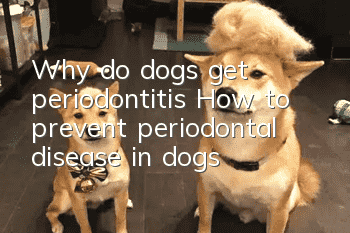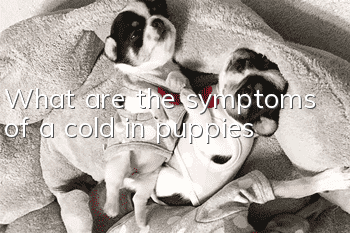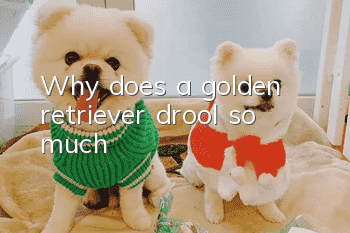Why do dogs get periodontitis? How to prevent periodontal disease in dogs!

Causes of periodontitis in dogs
1. Fungal factors:
Candida albicans, Blastomyces dermatitidis, Histoplasma capsulatum, etc.2. Bacterial factors:
Clostridium and spirochetes, which are part of the normal oral microbial system, can cause necrotizing ulcerative gingivitis, stomatitis, canine Leptospira and hemorrhagic jaundice. It can also cause oral infections in dogs.3. Physical factors:
Dogs accidentally eat sawdust, iron wire, fish hooks, burrs, sewing needles and other foreign objects that puncture their mouths, causing oral inflammation or ulcers; in addition, dogs accidentally eat heavy metals and irritating drugs. , accidentally biting a live wire can directly cause corrosive inflammation and burn inflammation in the oral cavity.4. Immune-mediated factors:
Most cases of dogs have oral lesions, which often invade the primary site and spread from scattered ulcers on the lips and oral mucosa to the tongue and gums to form lesions.5. Metabolic factors:
1) Chronic renal dysfunction (such as diabetes, kidney disease), dry mouth due to dehydration, which makes the disease more serious.2) Uremia caused by systemic diseases.
3) Hypothyroidism and hypoparathyroidism can cause oral mucosal ulcers and periodontal disease.
4) Vitamin deficiency can directly lead to oral diseases, especially B vitamin deficiency can aggravate such diseases.
5), chronic gastritis, and gastric ulcer can also cause oral diseases.
Key points for diagnosis of periodontitis in dogs
1. Symptoms include bad breath, drooling, gum knuckles, swelling, softening, recession, exposed tooth roots, loose teeth, and purulent discharge (or purulent discharge pushing out the gums).
2. Specific symptoms: a feeling of hunger, wanting to eat but not daring to eat. When food enters the mouth, it stimulates the inflammatory site and causes pain. The affected dog suddenly howls and runs away avoidantly. There is salivation in the mouth, and some people stick their tongues out of the mouth. Those who last longer will gradually lose weight.3. When the mouth is opened, varying degrees of redness, swelling, ulcers or granulation hyperplasia can be seen on the oral mucosa, tongue, soft palate, hard palate and gums.
4. Radiological films showed localized alveolar osteolysis, indicating tooth apical abscess.
Prevention and treatment measures for dog periodontitis
1. Remove the dog’s dental plaque, calculus and food residue under anesthesia. Pay attention to removing plaque and calculus on the tooth root surface under the tooth margin (that is, in the periodontal pocket).2. Polish all tooth surfaces as much as possible to prevent plaque and calculus from accumulating and adhering again.
3. Remove loose teeth. For stubborn periodontitis that does not heal for a long time, the relevant teeth should be extracted. If the gums are enlarged, excess tissue can be removed with electrocautery.
4. Apply iodine glycerin after surgery. Systemic application of antibiotics, vitamin B complex, niacin, etc.
5. Have frequent oral and dental exams and clean the scales regularly with gauze. Feed solid food to your puppyBones or chewing gum, etc. to exercise teeth and gums.
Random articles
- Do mosquitoes bite dogs?
- Teddy vomiting
- Boxer dog daily care
- Can dogs eat fish food?
- How big and heavy can a golden retriever grow?
- Can a golden retriever be kept as a native dog?
- Teacup Teddy grows fastest in what months
- How powerful is the self-healing ability of dogs?
- What does it mean when a dog wags its tail?
- What should I do if my dog gets parvovirus? Can it still be saved?



